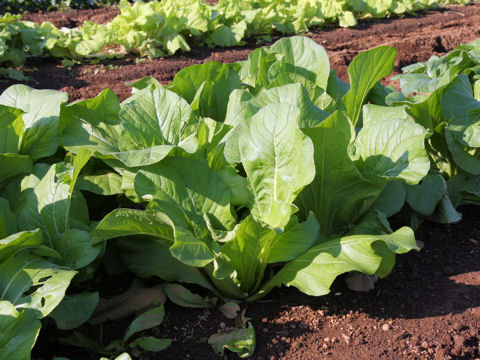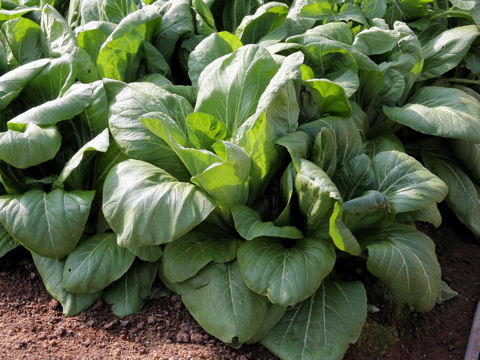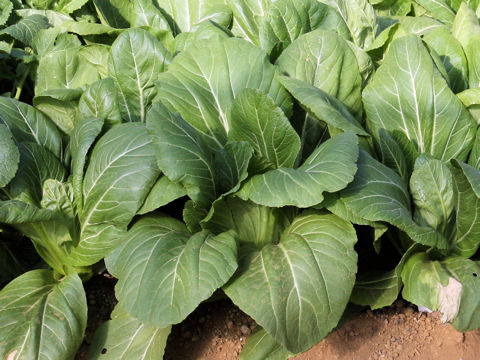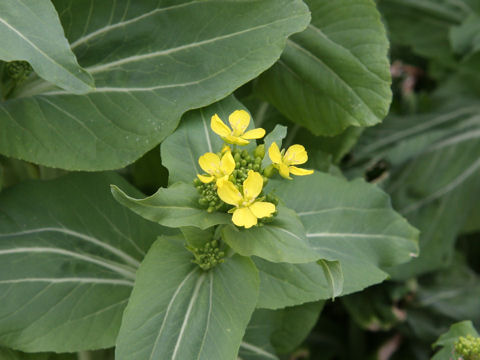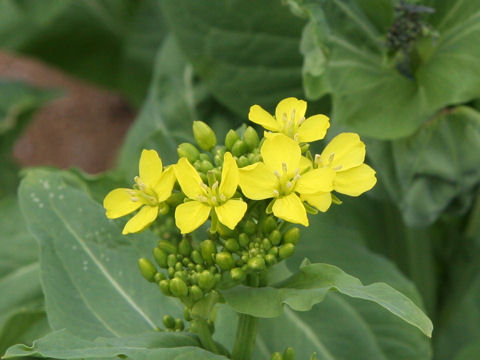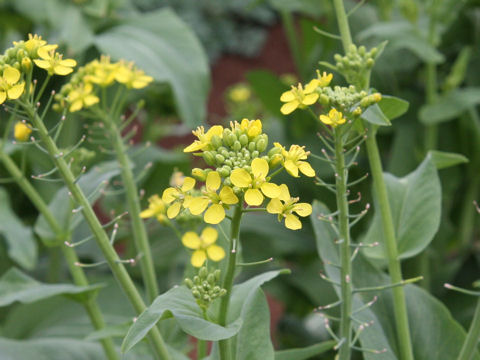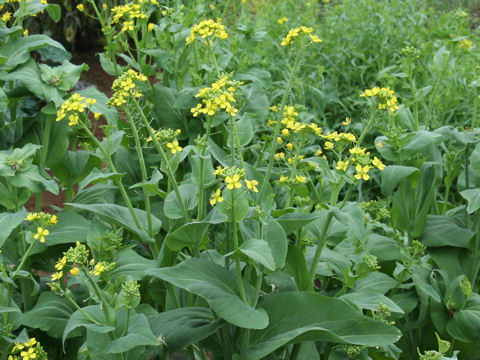
|
The "Hiroshima-na" (Brassica rapa var. pekinensis) belongs to Brassiaceae (the Mustard family). It is a biennial herb that is endemic to Hiroshima prefecture. There are various theories about the origin of "Hiroshima-na", but it is said that the first cultivation of this vegetable began in the Keicho era (1596-1615) of the Edo period, when the residents of Kannon-mura received seeds from Kyoto's Nishi Honganji temple and began growing them. It is also said that, in the Meiji era (1868-1912), Kihara Saiji of Kawauchi-mura improved the vegetable by cross-breeding it with the traditional "Kyo-na". It is a form of non-head-forming Chinese cabbage. The leaf blade is dark green, broad and large with non-laciniate edges. The rachis of leaf blade is white and tinged bluish. This is known as one of three major pickled vegetables in Japan, together with Kyushu "Takana" and Shinshu "Nozawa-na".
|
